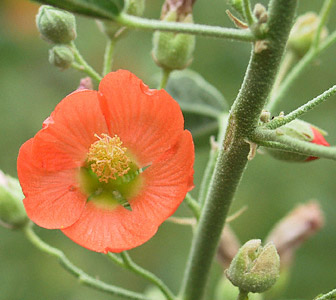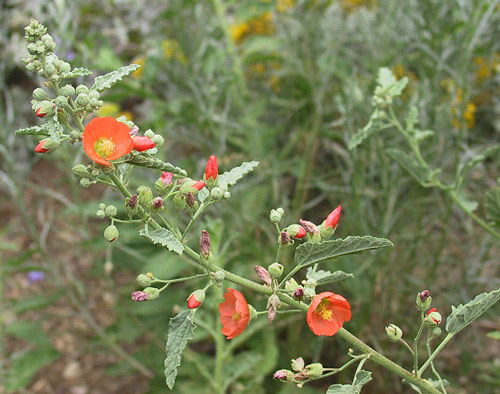
This has become one of our favorite mallows: It forms a nicely upright, vase-like shrub, up to 2–4' high and across. Long wands of apricot-orange flowers bloom throughout the summer above silver-green foliage. This sun lover is drought-tolerant, and is praised by many as being a tough plant, doing well under a range of conditions including desert plains and the high desert, rocky and disturbed areas, and even the clay soil we have here in Sherman Oaks. After three years, it's produced a couple of new plants by underground runners nearby, but it's in no way a problem plant.
If you have been disappointed with its smaller and far more common cousin Sphaeralcea ambigua (Desert Globemallow), consider Munro's Globemallow as a replacement. It can be found natively throughout the Western portion of North America, from California through British Columbia (where it is endangered). But good luck finding the real Sphaeralcea munroana at many nurseries.
In the late 1990s, several nurseries incorrectly sold the South American Sphaeralcea philippiana – a bulletproof red-flowered groundcover that has its own charms – as Sphaeralcea munroana. Botanic references clearly describe S. munroana as an erect orange-flowering shrub; this only led some to incorrectly label S. philippiana as a “red-flowered creeping form” of S. munroana. Some nurseries perpetuate this mistake to this day! We found the real McCoy eventually...
Our S. munroana takes from cuttings but has also hybridized with a nearby S. fendleri var. venusta; the offspring have flowers from pale pink to a sherbet orange color, which we've propagated and introduced as Wild Blush, Wild Sherbet, and Wild Pale Pink.
